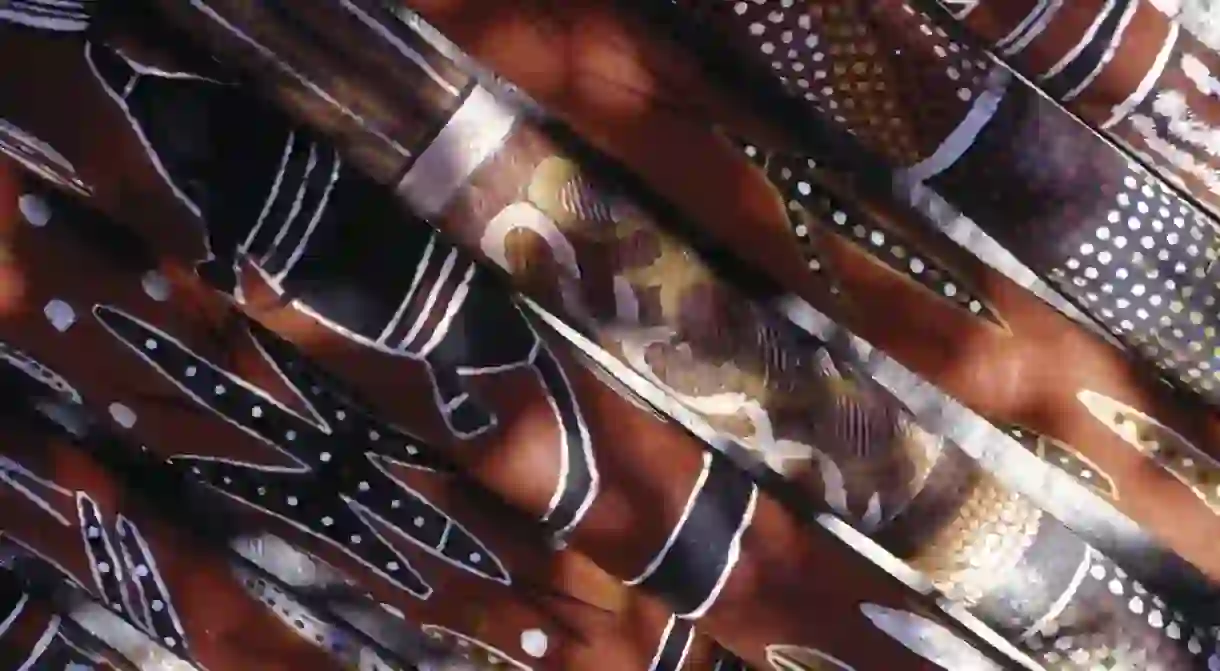Discover The Didgeridoo, An Australian Aboriginal Brass Aerophone

Listen to the sound of Australia – the nature and the animals – through the world’s oldest musical instrument. The didgeridoo has been used by Australian Aboriginals for over 40,000 years and continues to make its appearance in the songs of today.
‘Aboriginal art is perhaps most accurately described as a method for gaining knowledge of nature and its invisible Dreaming.’
Traditionally, Aboriginal people would travel across their land listening intensely to the noises made by both animals and nature itself. From animals they wouldn’t just listen to their calls, but the sounds of their feet against the trees and grass, the flap of their wings, the pecking of their beaks and any other noise they produced. Then the sounds of thunder and wind, the noise of trees creaking and water running would be combined with the aforementioned sounds and played with as much accuracy as possible.
There are many different beliefs behind the creation of the didgeridoo, but it is in Dreamtime that the most popular and sacred beliefs are held. One Dreamtime story tells the story of one god in particular who carried his didgeridoo on his back and later transformed into a bird with the didgeridoo sticking out from behind, becoming the bird’s long, narrow tail; whilst another tells the story of three gods who would play didgeridoo, sing and dance together, also taking on bird-forms. As they do so, they name and create all the different things in our world.

The didgeridoo is a brass aerophone, that was originally found in Arnhem Land in Northern Australia over 40,000 years ago, and was played by men only in tribal groups. Traditionally they are made from trunks and limbs from eucalyptus trees that had been hollowed out by termites and bamboo from the far north of the country. Once hollow, the people would clean out the leftovers with sticks or saplings. Although termites would usually hollow them out to an average length ranging between 130-160 centimetres, there is no standard didgeridoo shape or size and they all produce different sounds, with a higher pitch being played in the more flared instrument. Today, didgeridoos are made from a variety of materials including leather, ceramic, glass, plastic and solid timbers.
Songs would often be played during ceremonies connecting them to their ancestors bringing Dreamtime to life, and is accompanied by chants, singers and dancers telling the tribal stories. However, it is often seen outside of ceremonies that both women and children would also play the didgeridoo. Further, many would paint their instrument using traditional or modern paints, crafted by the instrument’s maker or by a dedicated artist.
To play the wind instrument, one must continuously vibrate one’s lips into the drone whilst using circular breathing – a special breathing technique where one breathes through the nose whilst ‘simultaneously expelling stored air out the mouth using tongue and cheeks.’ This technique allows players to sustain notes for a long period of time, with a modern didgeridoo player holding the record of playing a continuous note for more than 40 minutes.
The rhythm and beat patterns that are played by Aboriginal people have been passed down for many generations and are still an integral part of ceremonial life. However, many players today have taken the modern approach to playing this instrument by combining the traditional patterns with beat-boxing to create a whole new sound, and didgeridoos are featured in many songs of today, like Solid Rock.
Despite being around for tens of thousands of years, the name didgeridoo is a western word that was given to the instrument roughly 100 years ago. Rather each Aboriginal tribe calls the sacred instrument something different; for example the Gagudju people from the Kakadu region call the instrument garnbak, whilst the Jawoyn people from the Katherine region call it artawirr and the Nyul Nyul people from the Kimberley’s call it ngaribi. However, the western word didgeridoo has further been spelt in a variety of different ways – didjeridoo, didjeridu, didjiridu, didjerry, dijeridu and didjereedoo – but all relate to the same instrument. No matter how you spell or pronounce it, the instrument itself is colloquially known as the ‘sound of Australia.’













